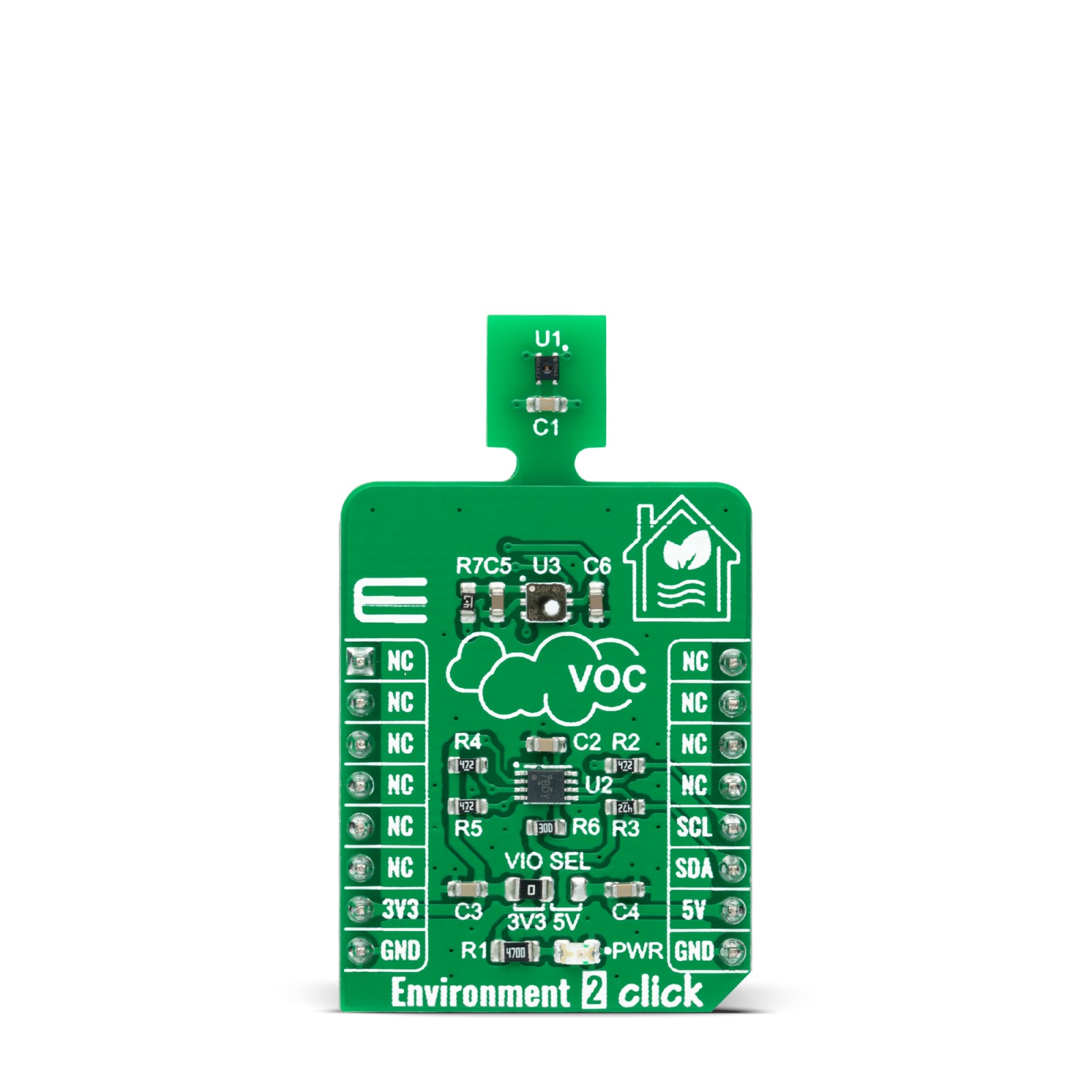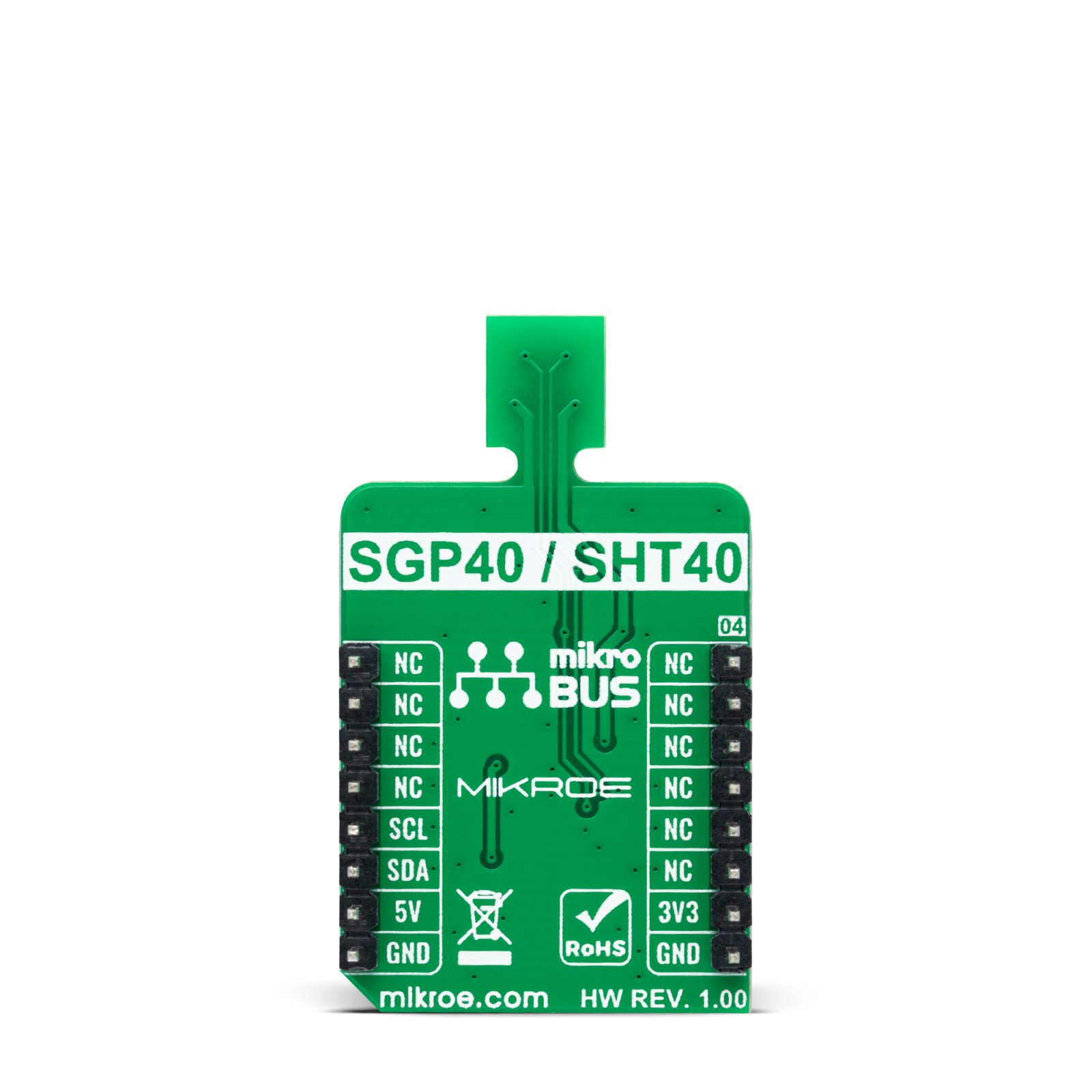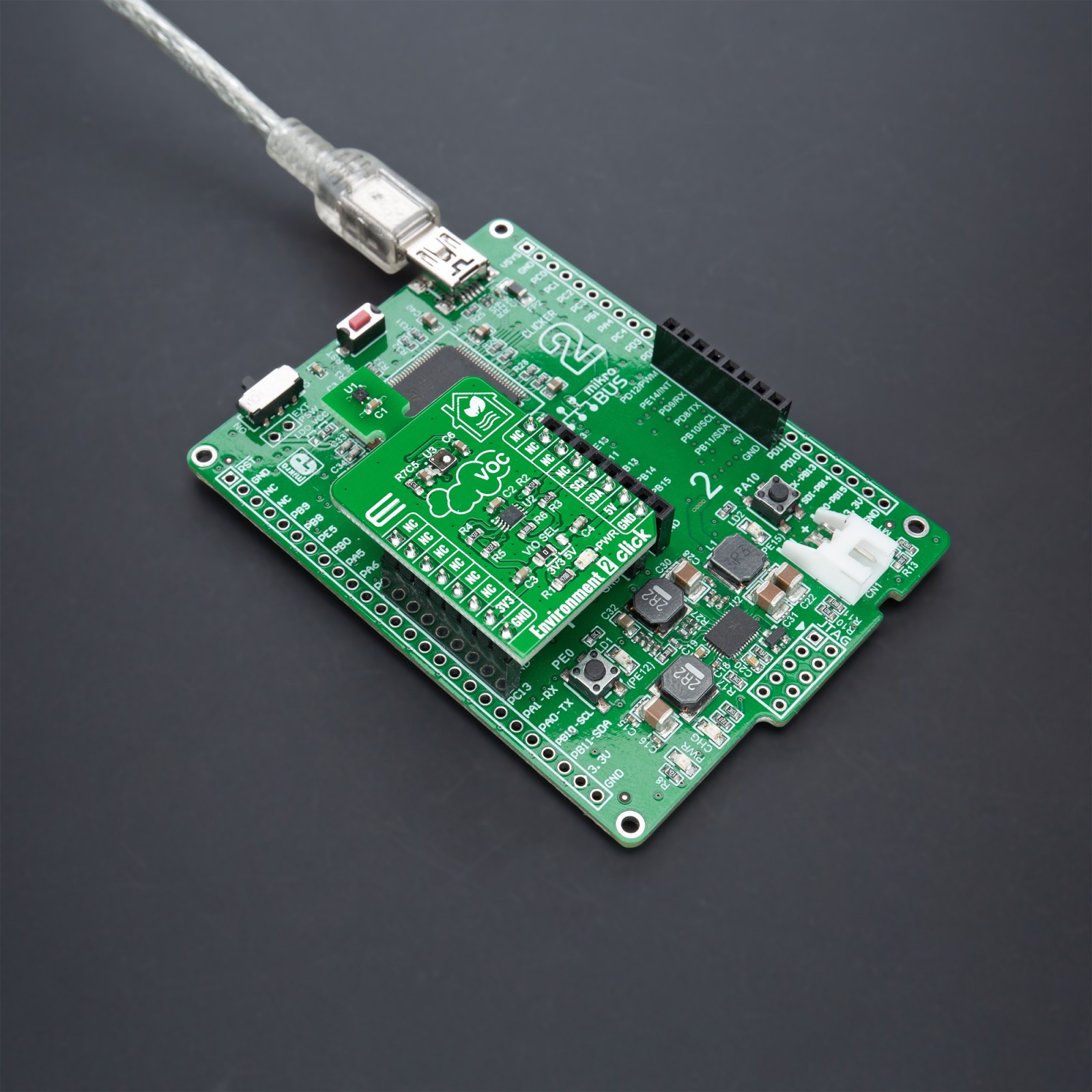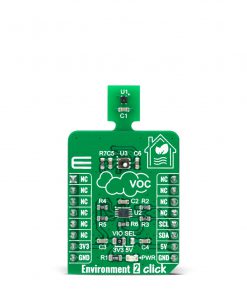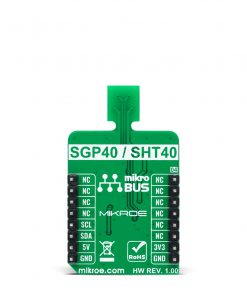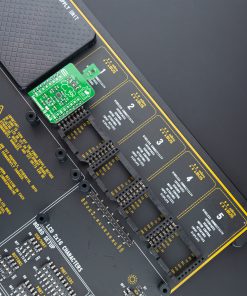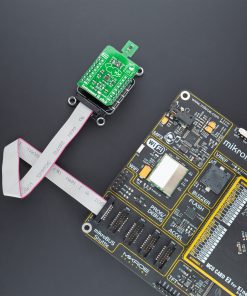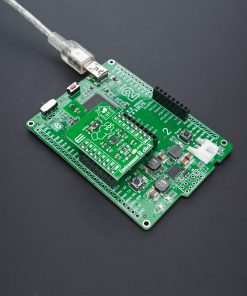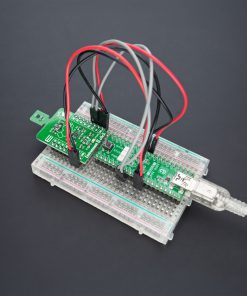Environment 2 Click
R425.00 ex. VAT
Environment 2 Click is a compact add-on board containing best-in-class SHT humidity and SGP air-quality sensing solutions from Sensirion. This board features SHT40 and SGP40, a high-accuracy ultra-low-power relative humidity, and a temperature sensor combined with MOx based gas sensor. The SHT40 sensor offers linearized digital output, provides constant temperature accuracy, up to 0.1°C, and shows the best performance when operated within the temperature and humidity range of 5-60°C and 20-80%RH, while the SGP40, a digital gas sensor, features a temperature-controlled micro hot-plate providing a humidity-compensated VOC-based indoor air quality signal. This Click board™ is suitable for indoor air quality and various temperature and humidity-related applications.
Environment 2 Click is supported by a mikroSDK compliant library, which includes functions that simplify software development. This Click board™ comes as a fully tested product, ready to be used on a system equipped with the mikroBUS™ socket.
Stock: Lead-time applicable.
| 5+ | R403.75 |
| 10+ | R382.50 |
| 15+ | R361.25 |
| 20+ | R347.65 |

